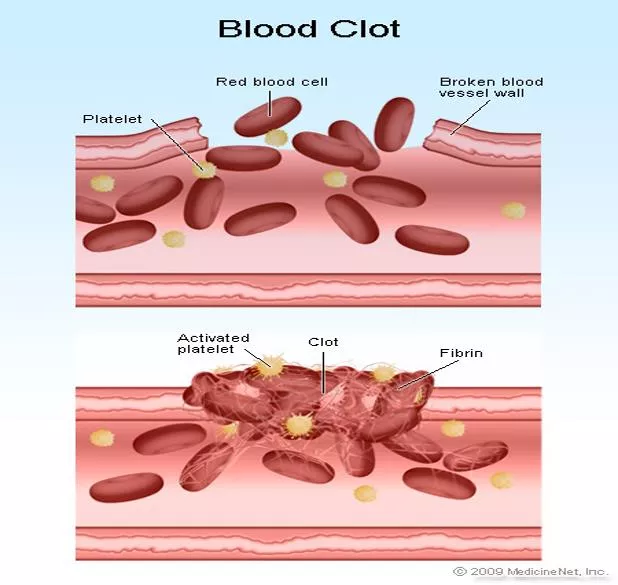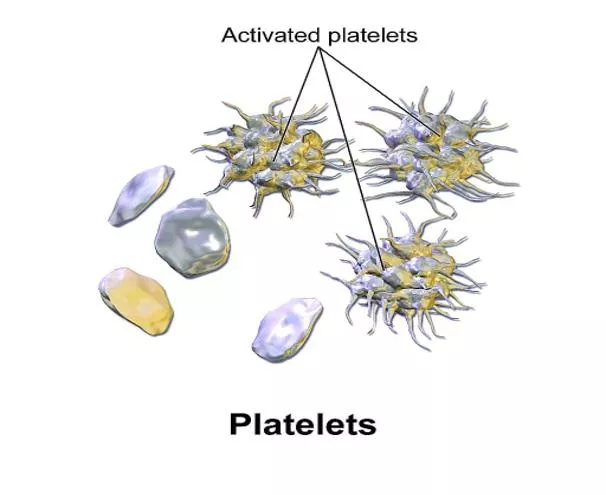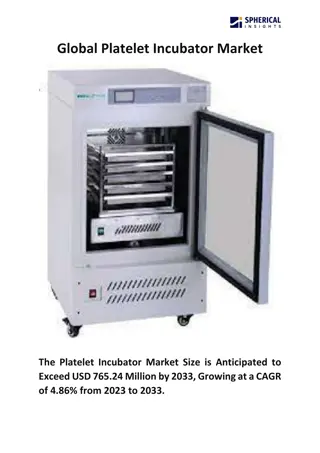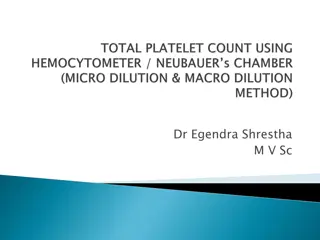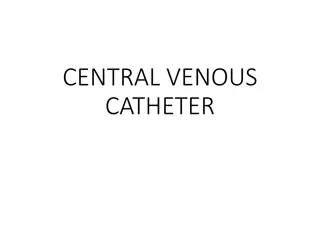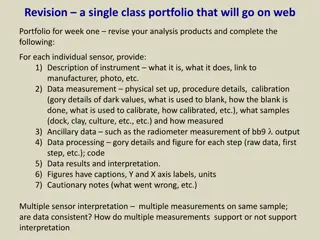Platelet Counts and Interpretation of Results
Platelet counts play a crucial role in blood coagulation and health assessment. Learn about the procedure, calculations, and interpretation of results for platelet counts. Discover normal values, potential conditions related to abnormal counts, and how to conduct a platelet count test. Explore the significance of platelets in different animals and understand the importance of maintaining proper platelet levels for overall well-being.
Uploaded on Feb 22, 2025 | 0 Views
Download Presentation

Please find below an Image/Link to download the presentation.
The content on the website is provided AS IS for your information and personal use only. It may not be sold, licensed, or shared on other websites without obtaining consent from the author.If you encounter any issues during the download, it is possible that the publisher has removed the file from their server.
You are allowed to download the files provided on this website for personal or commercial use, subject to the condition that they are used lawfully. All files are the property of their respective owners.
The content on the website is provided AS IS for your information and personal use only. It may not be sold, licensed, or shared on other websites without obtaining consent from the author.
E N D
Presentation Transcript
Platelet Counts Platelet Counts
Platelets: Platelets are the smallest formed elements in the blood, normally ranging in size from 2-4 microns. Platelets function in the coagulation of blood. A normal platelet count is 150,000- 400,000/c.mm.in human
Objectives : To determined the platelate count of the provided sample. Normal value in some animales 300,000-600,000 L goat 250,000-750,000 L sheep 100,000-600,000 L horse 100,000-800,000 L cow
Procedure \ Materials needed: Whole fresh blood. RBC Pipette. Ammonium oxalate 1%, in a distilled water. Hemacytometer chamber. Microscope. Petridish. Pipette rotator. Filter paper. Alcohol.
Procedure: Using RBC Pipette with drawn blood to exactly 0.5 mark; then dilute to 101 mark with ammonium oxalate(dilution 1:200). Place the pipette on a pipette rotator for 10-15 minute to ensure complete haemolysis of RBC'S. Discard the first five drops from the RBC pipette and fill besides of the haemocytometer.
Placed the haemocytometer in a moist petridish; and leave it for 20-30 min.(this allow the platelate to settle and prevents evaporation of fluid). Put the haemocytometer on microscope and exam. Under power 10x. Then change the exam. to power 40x; the plat. appears round or oval bodies with alight purplish sheen( fine process may be seen). The platelate are counted in the central big square (which contain 25 small squars). Counting the no. of plat. in both sides of chamber; add two count to other and determined the average number of platelets counted.
CALCULATIONS: platelets\ c.mm = N X dilution \volume. Dilution : 1:200 Volume: the volume of diluted blood used, which is areas (1mm2)x depth(0.1mm) which equals to = 0.1 c.mm. PLTcount=N (25) 1000 /mm3
Interpretation of Results: Thrombocytopenia:Platelet counts below normal: A plastic anemia. Pernicious anemia. Acute leukemia's. Idiopathic thrombocytopenic purpura.
Thrombocytosis: Platelet counts above normal: Polycythemia Vera. Hemolytic anemia. Chronic myeloproliferative disorders. After splenectomy.
Sources of error Precautions to be taken Glassware must be scrupulously cleaned . debris and dust are the main sources of error as they are easily mistaken for platelets. The diluting fluid must be filtered just before use . to remove particles. If venous blood is used the platelets must be counted within 3 hours. delay causes disintegration and clumping of platelets. Blood should be rapidly diluted . this is essential to prevent clumping. Precautions to be taken Blood must be thoroughly mixed with the diluents by shaking the contents at least for 10 minutes. inadequate mixing results in clumping of platelets. The charged chamber should be kept for 15 minutes under Petri dish. to prevent evaporation and for the cells to settle down. If other hematologic tests are to be done with platelet count ,and blood is used from the same puncture ,take blood for the platelet count first. The finger should not be squeezed excessively to collect blood




